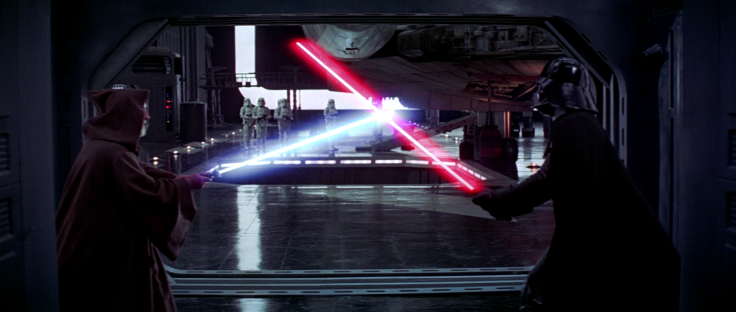Have Harvard Scientists Created A Real Lightsaber? Kind Of.

Brace yourself, because your wildest childhood fantasies are about to become reality: Lightsabers are real. Or at least they could be, thanks to pioneering new research from Harvard and MIT.
A joint Harvard-MIT research program led by Harvard Professor of Physics Mikhail Lukin and MIT Professor of Physics Vladan Vuletic has created a new state of matter the two describe as extremely similar to the lightsabers seen in “Star Wars.” According to the research, published in Nature on Wednesday, Lukin and Vuletic have “managed to coax photos into binding together to form molecules,” creating “photonic molecules” that behave not unlike a Jedi Knight’s weapon of choice.
"Most of the properties of light we know about originate from the fact that photons are massless, and that they do not interact with each other," Lukin said in a press release. "What we have done is create a special type of medium in which photons interact with each other so strongly that they begin to act as though they have mass, and they bind together to form molecules. This type of photonic bound state has been discussed theoretically for quite a while, but until now it hadn't been observed."
"It's not an in-apt analogy to compare this to light sabers," Lukin added. "When these photons interact with each other, they're pushing against and deflect each other. The physics of what's happening in these molecules is similar to what we see in the movies."
To create these photonic molecules, the team placed rubidium atoms into a vacuum chamber and chilled to only a few degrees above absolute zero. Then, they used lasers to fire single photons into the atom clouds. When the photon moves through this field, it slows down, giving off energy to the atoms, but exits the clouds with all its energy intact.
Then, experimenters began firing groups of two photons into the atom cloud at once, only to find that they exited together like a single molecule. Researchers found that because of an effect called the Rydberg blockade, the two photons would move through the atomic cloud acting as a single unit, maintaining that formation after exiting the cloud.
Unfortunately for everyone’s inner child, Lukin says that he won’t use this knowledge to create “an elegant weapon, for a more civilized age.” Instead, Lukin says that photonic molecules could potentially be used in the future of quantum computing.
"We do this for fun, and because we're pushing the frontiers of science," Lukin said. "But it feeds into the bigger picture of what we're doing because photons remain the best possible means to carry quantum information. The handicap, though, has been that photons don't interact with each other.
"What it will be useful for we don't know yet, but it's a new state of matter, so we are hopeful that new applications may emerge as we continue to investigate these photonic molecules' properties.”
© Copyright IBTimes 2025. All rights reserved.




















